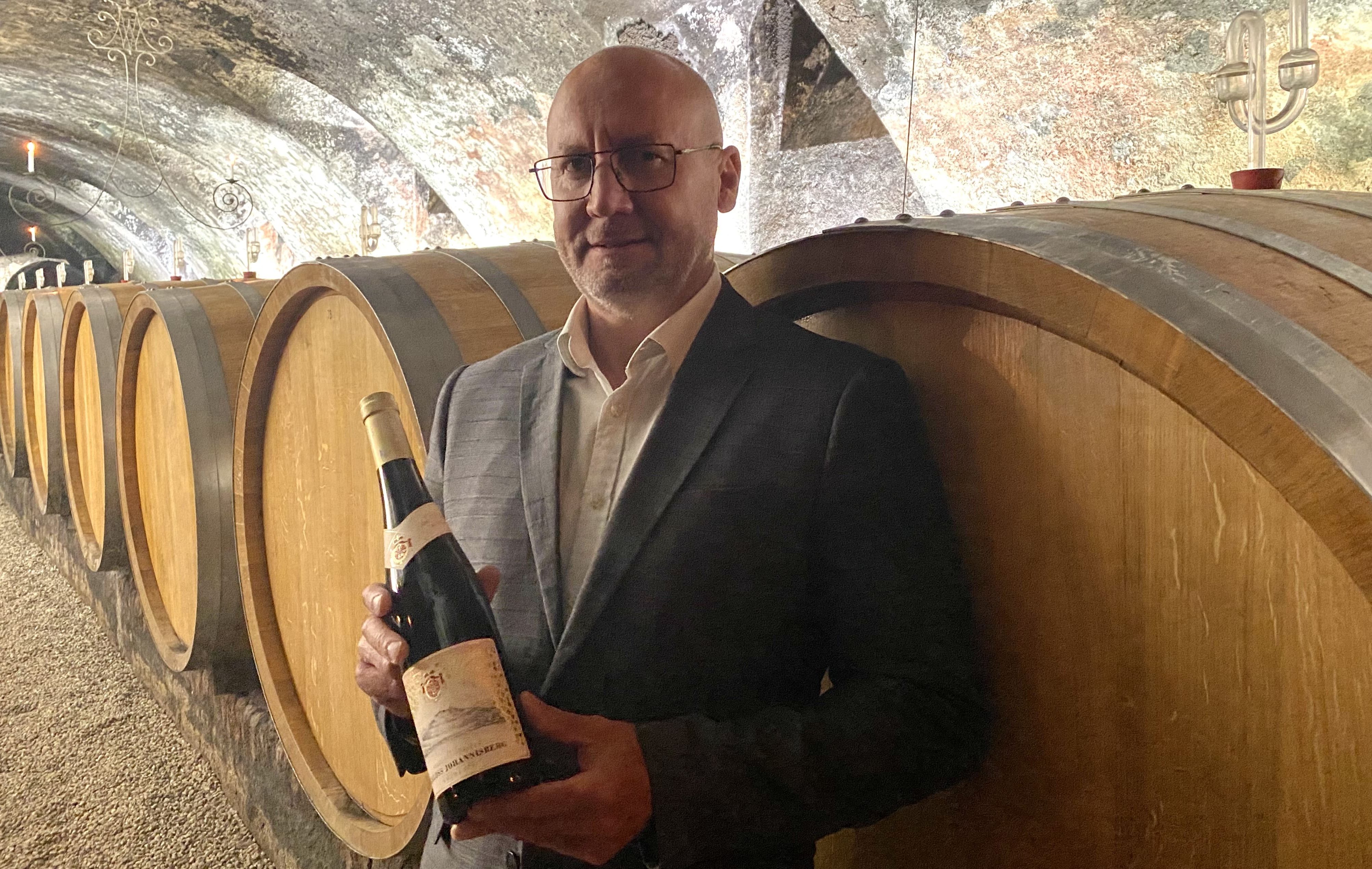
Germany dominates the top bottles of this report on the wines we rated over the past week – about 620 in total. Among them is a perfect dry riesling from Schloss Johannisberg that is something extraordinary and highlights the historical significance of this great wine estate in Germany’s Rheingau region. The magnificent winery overlooking the Rhine River has been making only riesling since 1720, and the Schloss Johannisberg Riesling Rheingau Goldlack Trocken 2019 will be remembered as one of its greatest dry rieslings ever.
The Schloss Johannisberg Riesling Rheingau Blaulack Trockenbeerenauslese 2019 was rated 100 points in 2020 and the same is true for the Schloss Johannisberg Riesling Rheingau Grünlack Spätlese 2019, which is to say that Germany’s 2019s continue to amaze us, and Schloss Johannisberg is one of the top estates in this prestigious vintage.
In the meantime, I tasted a new wine from one of Chile’s most iconic producers, Montes winery in Apalta, which is about two hours by car south of the capital, Santiago. Owner Aurelio Montes came to my office in Italy from Chile to tell me about the wine, which will be released on the market in September through Bordeaux negociants. The Bordeaux marketplace continues to grow it portfolio of non-Bordeaux wines from all the key regions of the world, from Australia and California to Chile and Argentina, not to mention Italy and other wine-producing areas in Europe.
READ MORE THE GOOD, THE GREAT AND THE UGLY: GERMANY’S SCHIZOPHRENIC 2020 VINTAGE
What’s unique about the pure cabernet sauvignon, Montes Cabernet Sauvignon Valle de Maipo Muse 2019, is that the grapes come from the Upper Maipo Valley instead of the more southerly Colchagua Valley. “I began my career 50 years go with Viña Undurraga in the Maipo Valley, so this wine has a special meaning to me,” Montes said.
He also commented that he named his new wine Muse “as a tribute to all the wonderful women in his life,” such as his wife, sisters, daughters and granddaughters. He said he would have never gone as far in life and in the wine world without all their support.
The wine comes from 12 hectares of loamy vineyards west of the more acknowledged area of the Maipo, where such Chilean stars as Almaviva, Chadwick and Don Melchor are produced. “It’s Maipo Alto,” Montes said. “It’s more protected. It’s more loam with deep soils and a certain proportion of stone, but less stone than Puente Alto. The altitude is at 2,500 feet from sea level.”
The grapes are picked and transported about two hours to Montes winery in Apalta in refrigerated trucks. It’s fermented in stainless steel vats and aged in 70 percent new French oak barrels for about 18 months before bottling.
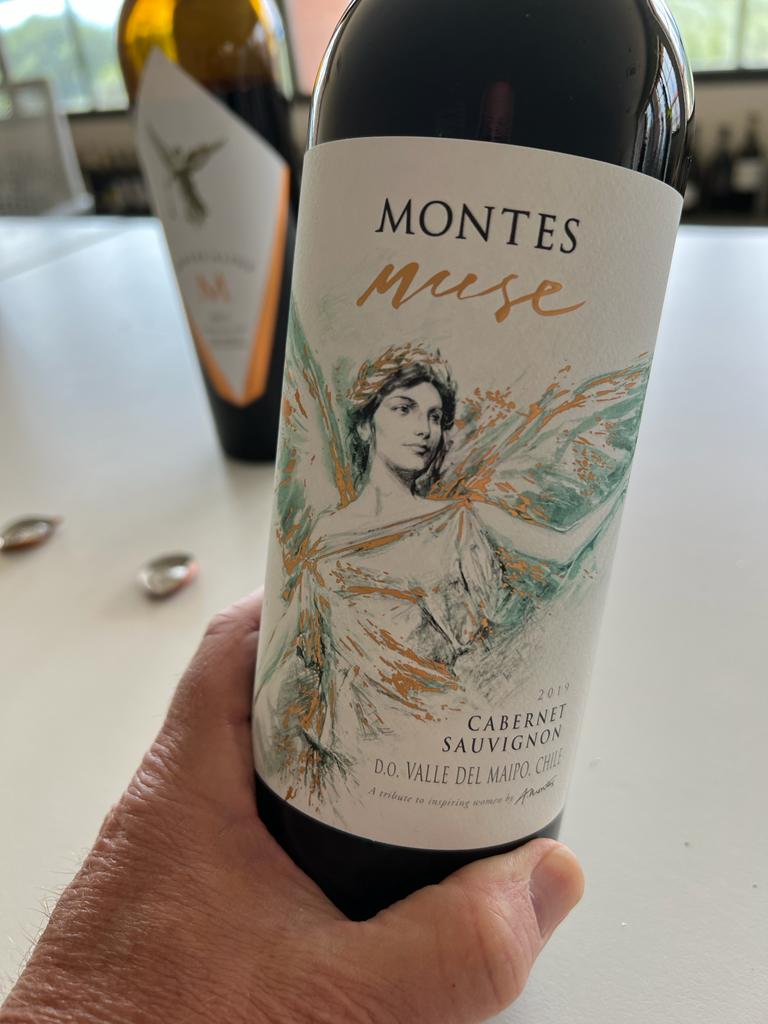

“2019 was a good vintage and rather cold with a cool spring and slightly cooler summer,” Montes said. “It was a long growing season. They don’t have a dramatic amount of alcohol.”
Indeed, I was very impressed with how the Muse 2019 presents itself in the glass with a finesse and focus reminiscent of a top Medoc from Bordeaux. The tannins are wonderfully integrated, and the character of the wine evolves beautifully from flowers and fresh herbs to currants and tobacco. The texture is wonderfully polished and refined. It, like other top wines from the Maipo, highlight why the region is one of the best for cabernet sauvignon in the Americas. The Muse is also more refined than his top reds from Apalta, which have a new world opulence to them.
While I was tasting mostly Italian wines in our office in Tuscany last week, Senior Editor Stuart Pigott was in full swing in Germany tasting the best of the country, including those fantastic offerings from Schloss Johanissberg. He didn’t quite race to start tasting Germany’s 2021 vintage whites, because just like in neighboring France it was a challenging year, although for different reasons.
READ MORE: TOP 100 WINES OF CHILE 2021
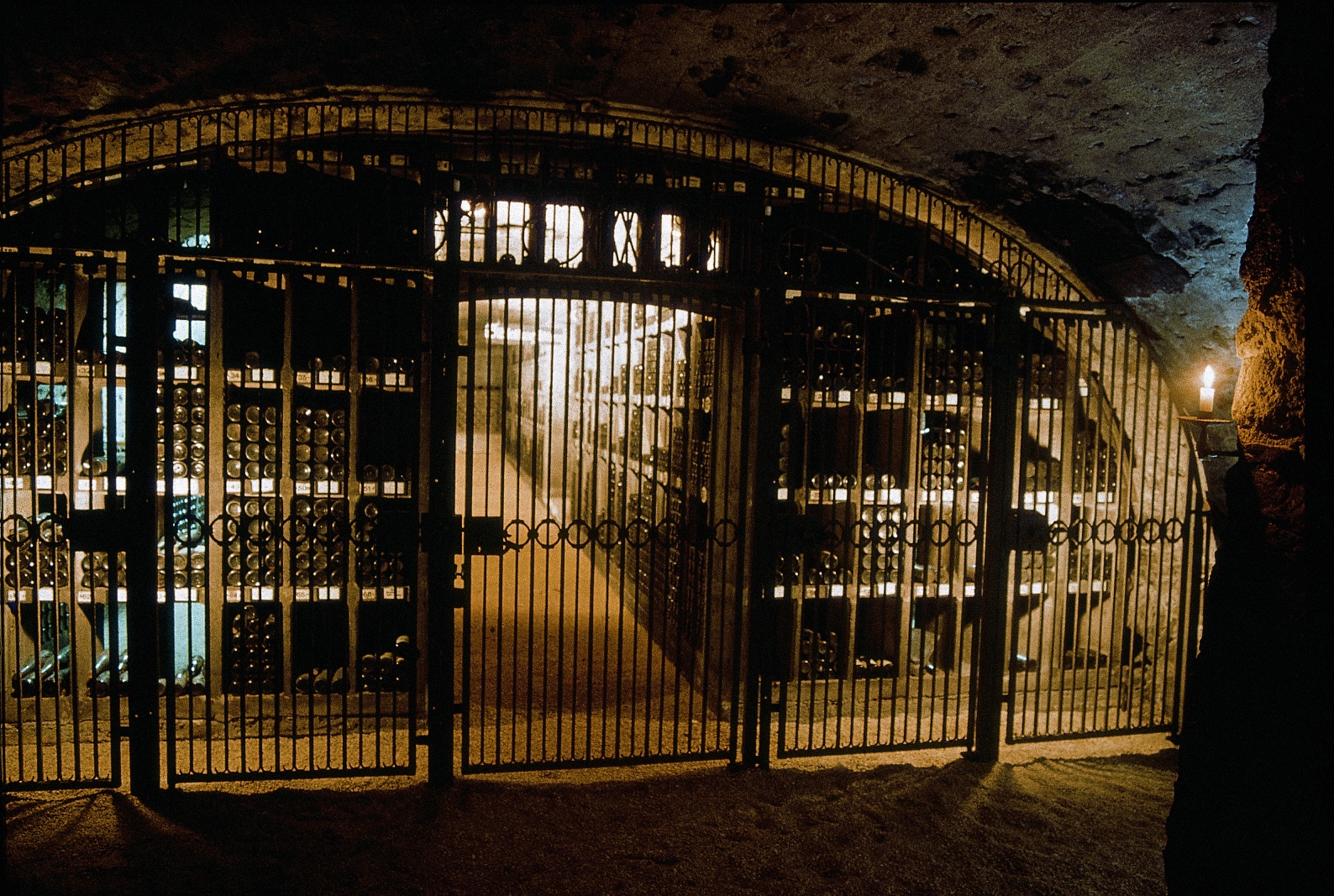
“My first impression of the wines is that they are of heterogenous quality,” Stuart said of the 2021s. “The acidity is sometimes tart and the depth is sometimes well behind that of the great 2019 vintage and the impressive and charming 2020 vintage.”
Then, because he was concentrating on making sense of the new vintage, a number of late-released wines from the 2020 and 2019 vintages took him by surprise. “At Leitz in the Rheingau, the 2020 dry riesling GGs are a very impressive group of wines with excellent terroir differentiation,” Stuart said. “However, the Leitz Riesling Rheingau Berg Kaisersteinfels GG 2020 is clearly the star of the show.”
And Schloss Johannisberg’s Goldlack 2019, he said, is “a completely different kind of wine – a liquid time machine.” Much of that has to do with the fact that it spent 30 months on the lees in barrel, mostly in the Bibliotheca Subterranea, an ancient cellar cut deep into the bedrock. “Maybe that’s what enables it to defy the normal categories of youthful and mature,” Stuart said. “Here they seem unified.”
We suggest you take a look at all the ratings for Schloss Johannisberg because Stuart found a handful of their wines to be amazing, and nothing was less than impressive.
Stuart is also well advanced in his tastings of new wines from Alsace: “I was very impressed with the entire range from a couple of under-the-radar producers, Domaine Simonis and Domaine Riefle. Here are the region’s young Turks!”
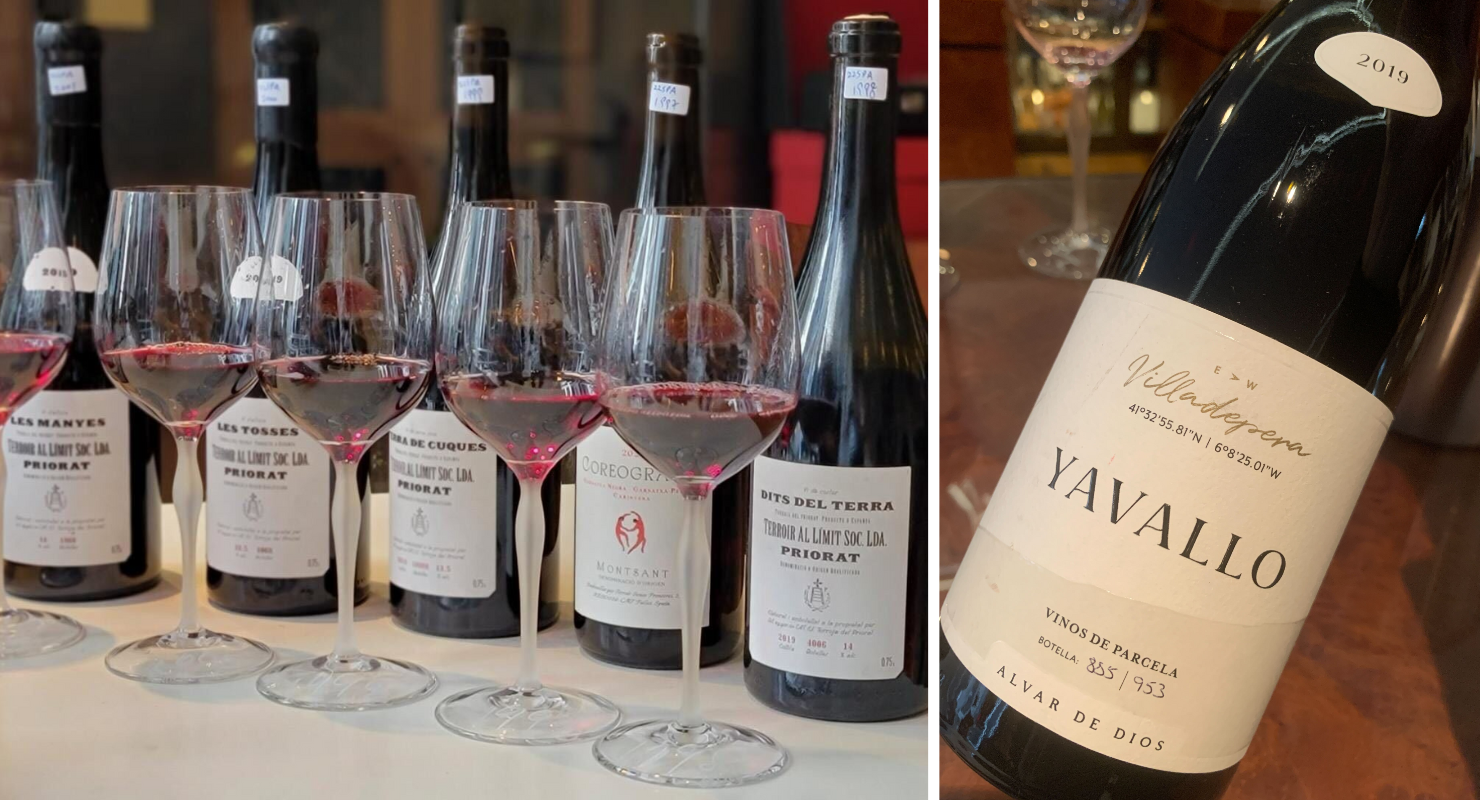
THE LIGHTER SIDE OF SPAIN
Meanwhile, our tasters in Hong Kong turned their attention to Spain’s artisanal and gastronomic wines, which are relatively lighter in form, more refined and delicate than the country standard, and come with pinot sensibility and Bojo drinkability. They are not just about confident color transparency, but also about respect for purity and authenticity of fruit, vintage and, most important, provenance. These wines showcase clarity, drinkability and class rather than power, richness and opulence, making them great companions with lighter fare.
Dominik Huber, the co-founder of Terroir Al Limit, and Tatjana Peceric, the head winemaker, wouldn’t think twice about pairing their carignans with seafood. Huber believes the country’s gastronomic culture profoundly influences winemaking, with terroir now allowed to shine through. Their composed and cerebral Terroir al Limit Priorat Arbossar 2020 and Terroir al Limit Priorat Les Tosses 2019 are among the best examples from the Iberian Peninsula that illustrate the agility and effortless flavor concentration of carignan.
With healthy, naturally low-yielding fruit, the purity of carignan is found through softer extraction without oak adornment – something more like “an infusion of tea” with whole bunches, according to Peceric.
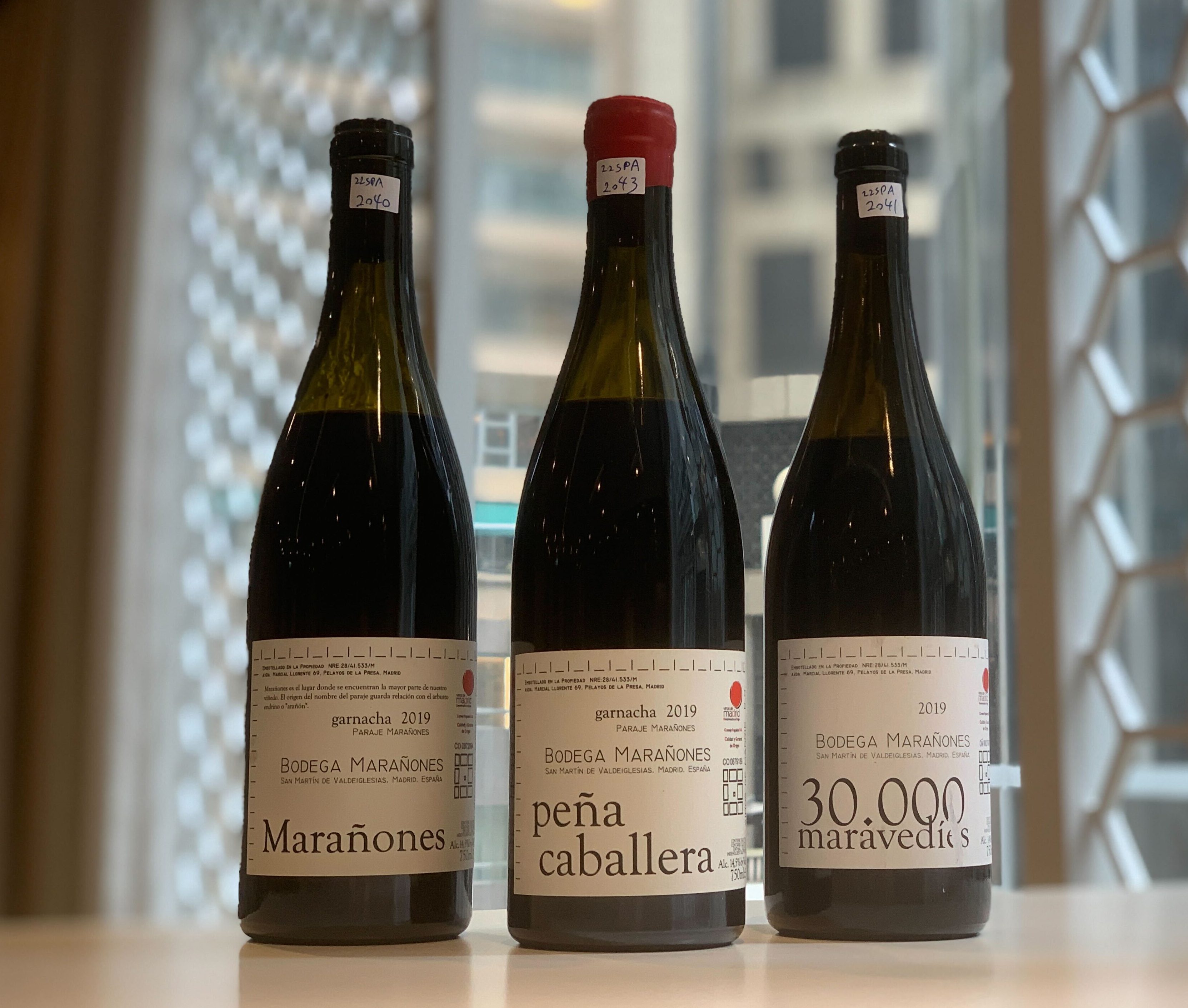
We also enjoyed a few of their garnacha and garnacha-based wines, one of which is the nimble Terroir Sense Fronteres Montsant Coreografia 2021, an attractively reductive and flinty red made with grenache noir and the rare and more vibrant grenache peluda (hairy grenache) and carignan.
Garnacha is often described as the Mediterranean pinot noir, but it also has the ability to reflect provenance. In Sierra de Gredos, wines like Bodega Marañones Garnacha Vinos de Madrid Peña Caballera 2019 show garnacha’s finesse and structure, which come through in the pursuit of purity and clarity. Winemaker Fernando Garcia, who also founded the venture Comando G with Daniel Landi, is behind the wave of Spain’s ongoing garnacha revolution.
Former Marañones winemaker Alvar de Dios is also following the path of making lighter, exciting offerings in Arribes del Duero. With only around 11 percent alcohol, his Alvar de Dios Castilla y León Yavallo 2019 is an agile and elegant expression of old vines based on trousseau. It shows a naturally juicy palate brimming with verve and drinkability. The downside is that fewer than 1,000 bottles were made from this vintage. The Alvar de Dios Castilla y León Las Vidres 2019 is another idiosyncratic bottle made from old-vine doña blanca, a rare white variety more often associated with white Port. We found it exotically perfumed with a sweet osmanthus, honeyed character and a brisk, mouthwatering finish. It’s another one that might be difficult to find on the market, so pick it up where you can…
– James Suckling, Editor/Chairman; Stuart Pigott, Senior Editor; and Zekun Shuai, Senior Editor
The list of wines below is comprised of bottles tasted and rated during the past week by James Suckling and the other tasters at JamesSuckling.com. They include many latest releases not yet available on the market, but which will be available soon. Some will be included in upcoming tasting reports.
Note: You can sort the wines below by country, vintage, score and alphabetically by winery name. You can also search for specific wines in the search bar.

